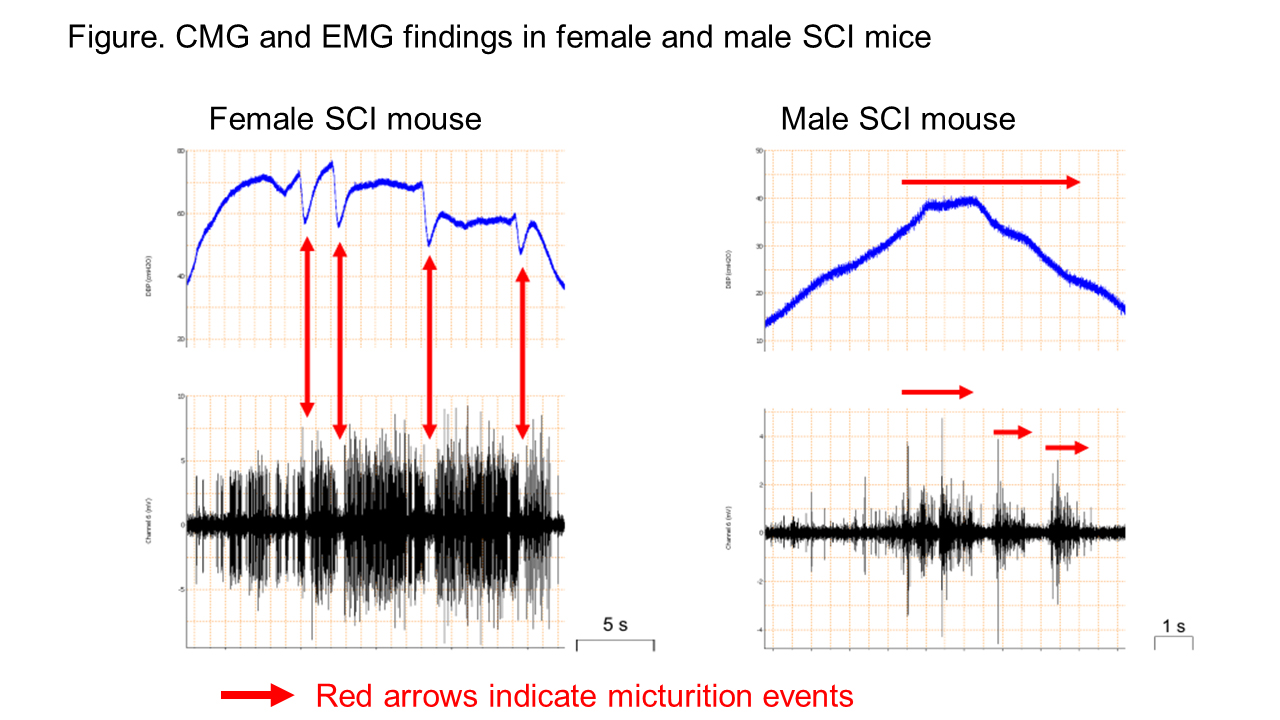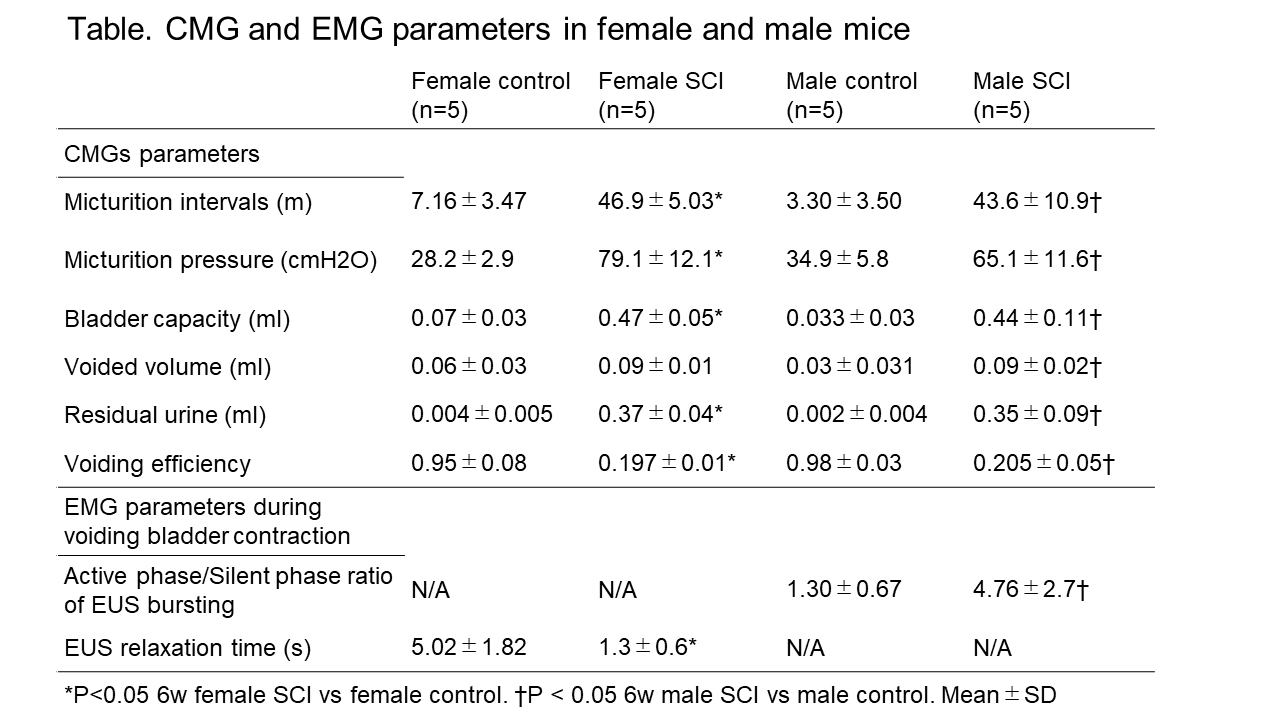Back
Introduction: In humans, voiding occurs during synergic relaxation of the external urethral sphincter (EUS), and SCI induces detrusor-sphincter dyssynergia (DSD) shown by tonic EUS contraction during voiding. However, EUS bursting activity is known to be an important mechanism for efficient voiding in spinal intact (SI) and SCI rats while such data are less available in mice. Thus, we evaluated gender-specific EUS function during voiding in male and female mice with or without SCI.
Methods: C57BL/6N mice at 9-10-weeks old were used. SCI mice underwent complete transection of the Th8-9 spinal cord. Six weeks after SCI, cystometrograms (CMGs) and EUS- electromyography (EMG) were performed under an awake condition. Thereafter, L6-S1 dorsal root ganglia (DRG) were harvested to evaluate the transcripts of TRPV1 and Piezo2 using qPCR.
Results: In female SI mice, voiding occurred during an EUS relaxation period. Female SCI mice voided urine during notch like reductions in bladder pressure, which corresponded to EMG signal reduction periods during tonic EMG activity (DSD). On the other hand, male SI and SCI mice voided during EUS bursting activity characterized by alternating active and silent phases of EMG activity, with the longer active phase and low voiding efficiency in SCI vs. SI mice (Table and Figure). The mRNA levels of TRPV1 and Piezo2 in L6-S1 DRG were significantly higher in SCI male mice (n=4) and female mice (n=4) vs. SI mice (n=4).
Conclusions: Lower urinary tract function during the voiding phase was different between male and female mice. Female SI mice, in which voiding occurs during EUS relaxation, and female SCI mice, which exhibit DSD with periodic EUS relaxations, seem to be more suitable for the study of SCI-induced EUS dysfunction in humans, compared to SI and SCI male mice that exhibit EUS bursting activity during voiding. SOURCE OF
Funding: NIH R01DK129194


Moderated Poster Session
Session: MP60: Bladder and Urethra: Anatomy, Physiology and Pharmacology
MP60-08: Comparison of lower urinary tract dysfunction after spinal cord injury (SCI) between female and male mice
Sunday, April 30, 2023
1:00 PM – 3:00 PM CST
Location: S401A
- MH
Poster Presenter(s)
Introduction: In humans, voiding occurs during synergic relaxation of the external urethral sphincter (EUS), and SCI induces detrusor-sphincter dyssynergia (DSD) shown by tonic EUS contraction during voiding. However, EUS bursting activity is known to be an important mechanism for efficient voiding in spinal intact (SI) and SCI rats while such data are less available in mice. Thus, we evaluated gender-specific EUS function during voiding in male and female mice with or without SCI.
Methods: C57BL/6N mice at 9-10-weeks old were used. SCI mice underwent complete transection of the Th8-9 spinal cord. Six weeks after SCI, cystometrograms (CMGs) and EUS- electromyography (EMG) were performed under an awake condition. Thereafter, L6-S1 dorsal root ganglia (DRG) were harvested to evaluate the transcripts of TRPV1 and Piezo2 using qPCR.
Results: In female SI mice, voiding occurred during an EUS relaxation period. Female SCI mice voided urine during notch like reductions in bladder pressure, which corresponded to EMG signal reduction periods during tonic EMG activity (DSD). On the other hand, male SI and SCI mice voided during EUS bursting activity characterized by alternating active and silent phases of EMG activity, with the longer active phase and low voiding efficiency in SCI vs. SI mice (Table and Figure). The mRNA levels of TRPV1 and Piezo2 in L6-S1 DRG were significantly higher in SCI male mice (n=4) and female mice (n=4) vs. SI mice (n=4).
Conclusions: Lower urinary tract function during the voiding phase was different between male and female mice. Female SI mice, in which voiding occurs during EUS relaxation, and female SCI mice, which exhibit DSD with periodic EUS relaxations, seem to be more suitable for the study of SCI-induced EUS dysfunction in humans, compared to SI and SCI male mice that exhibit EUS bursting activity during voiding. SOURCE OF
Funding: NIH R01DK129194


